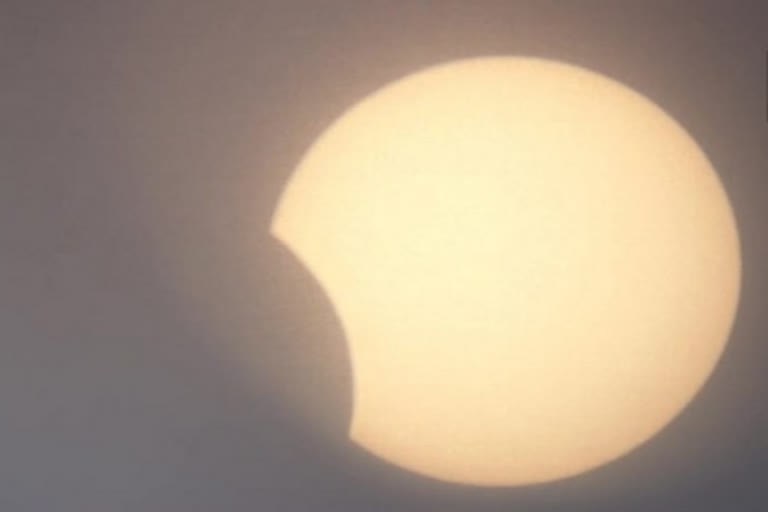New Delhi:A partial eclipse of the sun was witnessed in India on Tuesday evening and was visible for the longest duration from Dwarka in Gujarat. The eclipse was visible over most of India including some parts in the northeast. The ending of the eclipse was not visible from India as it was still in progress after sunset.
The obscuration of the sun by the moon was approximately between 40 and 50 percent at the time of the maximum eclipse in the north-western parts of the country. In other parts of the country, the percentage coverage was lesser. In Delhi and Mumbai, the percentage coverage of the sun by the moon at the time of the greatest eclipse was around 44 per cent and 24 per cent respectively.
The duration of the eclipse from the beginning up to sunset time was one hour and thirteen minutes in Delhi and one hour and nineteen minutes in Mumbai. In Chennai and Kolkata, the duration of the eclipse from the beginning up to sunset time was 31 minutes and 12 minutes respectively.
In Dwarka, the partial sun eclipse was visible for one hour and forty-four-and-a-half minutes. The partial solar eclipse occurred a day after Diwali. The eclipse was visible in the region covering Europe, the Middle East, north-eastern parts of Africa, western Asia, the North Atlantic Ocean and the North Indian Ocean. India will witness a total solar eclipse on August 2, 2027.
A solar eclipse occurs on a new moon day when the moon comes in between the earth and the sun and when all three are aligned. A partial solar eclipse will occur when the lunar disk covers the solar disk partially. An official release said eclipsed sun should not be viewed with the naked eye, even for a very short time.
